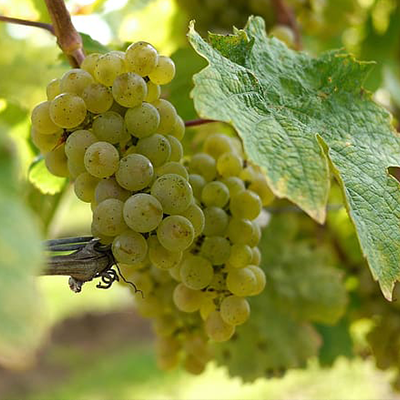
Grape School: Get to Know Riesling
When it comes to white wine grapes, one of the most stereotyped and misunderstood than Riesling. However, Riesling is currently a cult favorite of sommeliers, and makes up some of the most extraordinary and expensive wines in the world. In the coming blog entries we will examine all things relevant to Riesling. This week we will discuss the characteristics and history of the grape. In coming articles we will examine the places to look for it both in the old and new world, and how to pair the many variations on the variety with a meal!
Believed to be native to the Rheingau region in Germany, there are a few theories about where Riesling’s name came from. Some think that it may have come from the word “reissen” or in old German “rîzan”, which meant, “to split”, which might have come from the berries tendency to split between the fingers. Others think it had to do with the grape bunches ripening unevenly. No matter the root of the word, know that Riesling is not at all genetically linked to the varieties known as Welschriesling or Riesling Italico.
One of Riesling’s chief characteristics in the vineyard is that it buds late and is very hearty, making it possible to grown in areas with cooler springs and rugged climates. Its heartiness is born of the hardiness of the vines’ wood, enabling it to withstand the likes of cold German weather. It is mid to late ripening, so benefits from regions with long, dry, and sunny autumns such as one finds in Alsace, another region that is well-known for Riesling.
In terms of structure, Riesling has outstandingly high acid, which is essential to balance out the high sugar of some styles. Yet, that acid can be beautiful in some of the refreshing and bone dry renditions. Another boon of having high acid is that Riesling can age for decades with aplomb.
Chief flavor characteristics range include ripe stone fruit such as peaches and apricots to aromatics like honeysuckle and orange blossom. With age, it is well known to have a not-unpleasant aroma of petrol, which some think comes from sun exposure.
Riesling has an affinity to botrytis, also known as noble rot. Noble rot is a friendly fungus in the right conditions. In the right climates it does not actually cause a grape to “rot”, but punctures the skins of the grapes, drying them out and concentrating the sugars. It also lends aromas of marmalade, ginger, and honey to the finished wine, creating spectacularly complex wines.
Riesling probably got its (literally) unsavory reputation for being overly sweet and unsophisticated from the great swathes of cheap and chuggable sweet wine that were popularized by German brands like Blue Nun. Fortunately for wine aficionados, more and more consumers and sommeliers alike are recognizing that Riesling can be bone dry and refreshing. On the other end of the spectrum many are attuning to the fact that high quality sweet Rieslings can be beyond sophisticated.
Those are the Riesling basics! Next week we will talk about the Rieslings of the Old World, and why we should all be drinking them!
Also in News

Collectors Corner: What will 2026 bring for fine wine?
Key themes likely to impact collecting decisions


